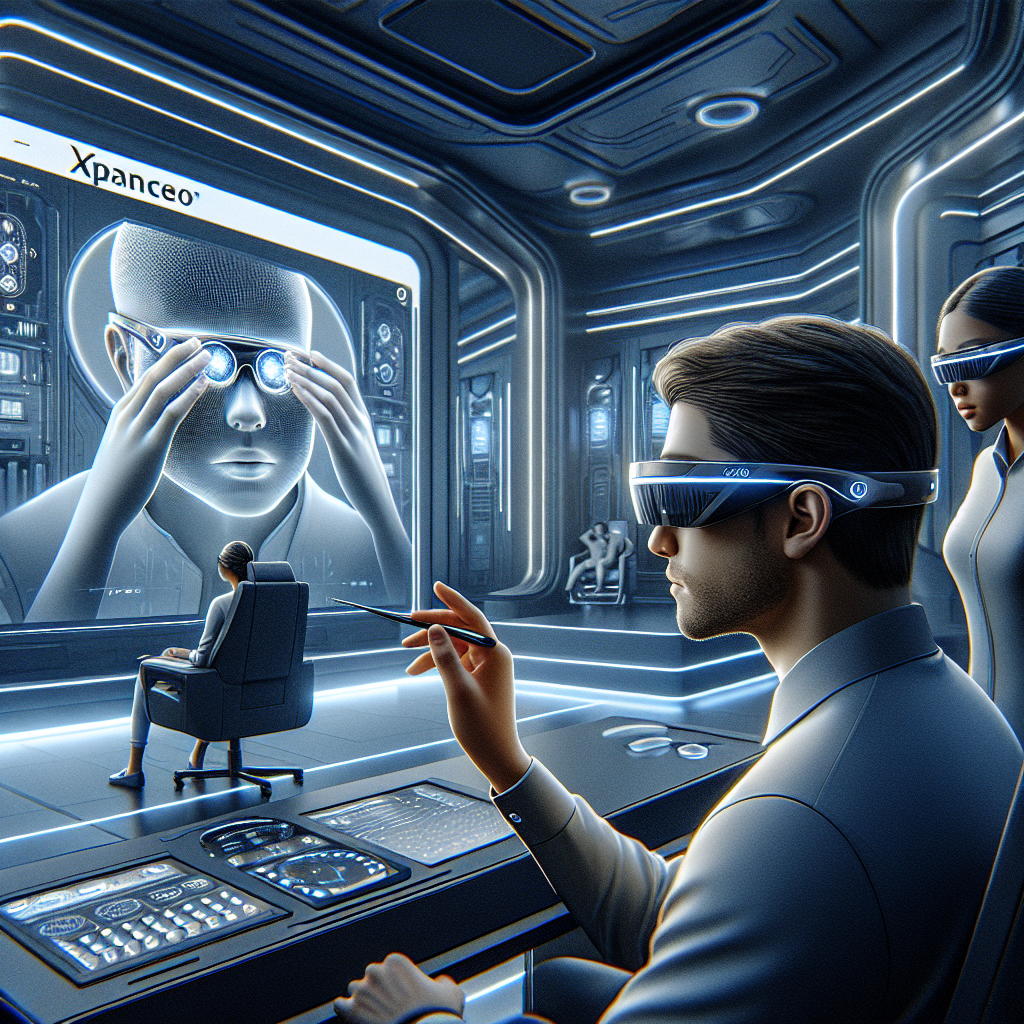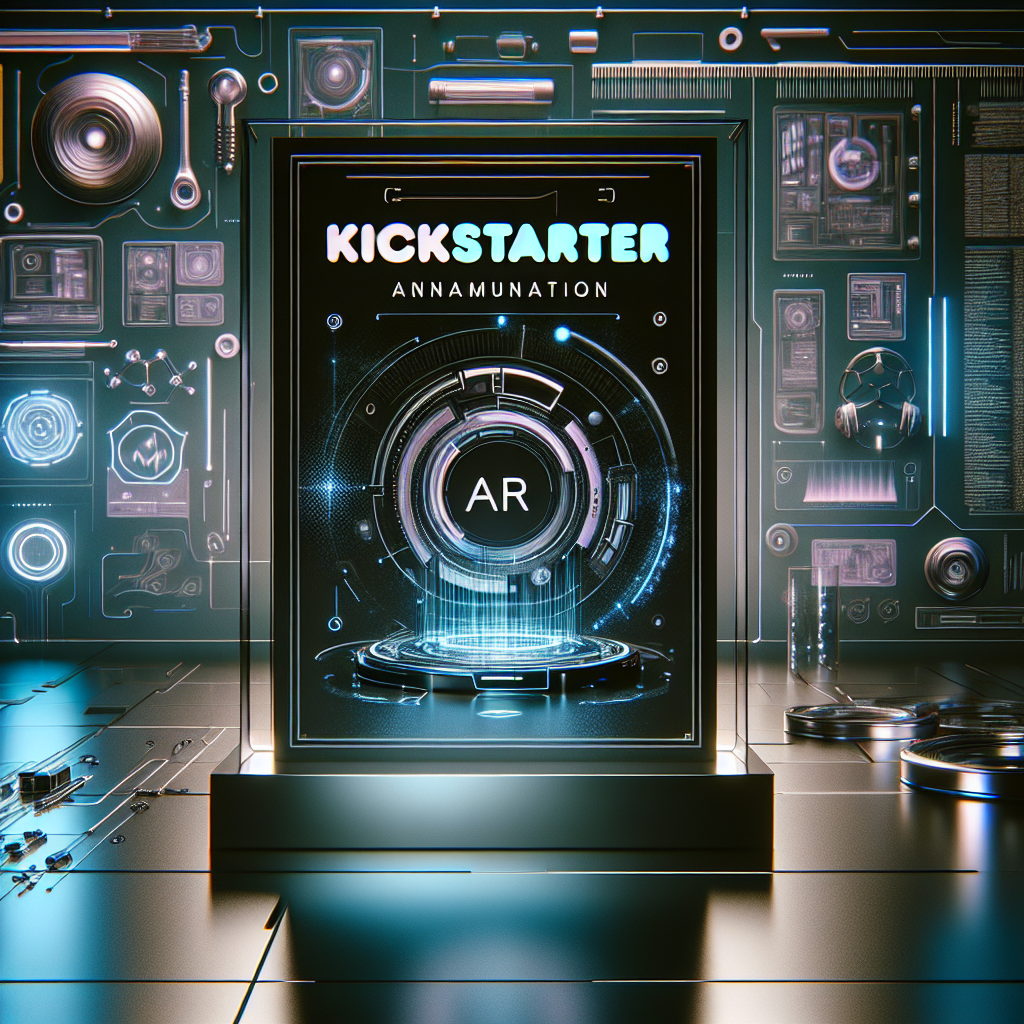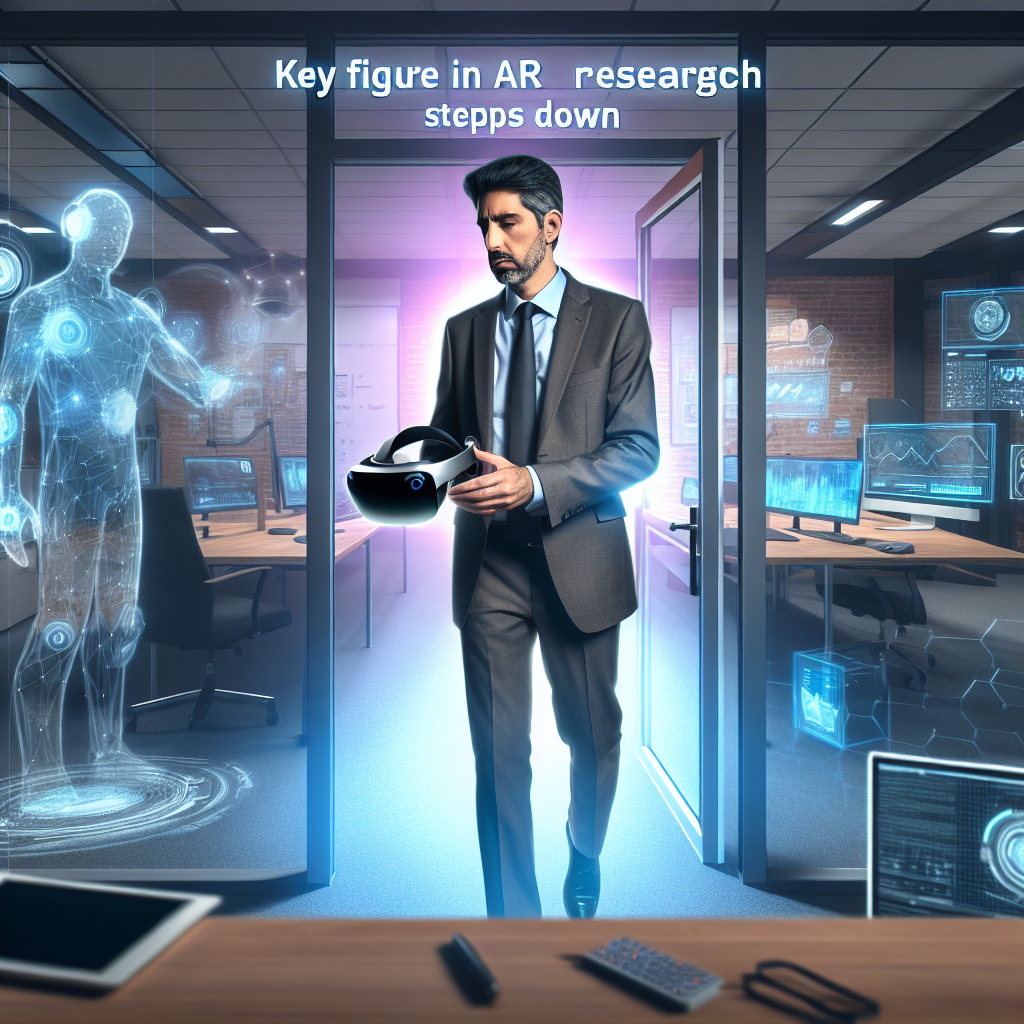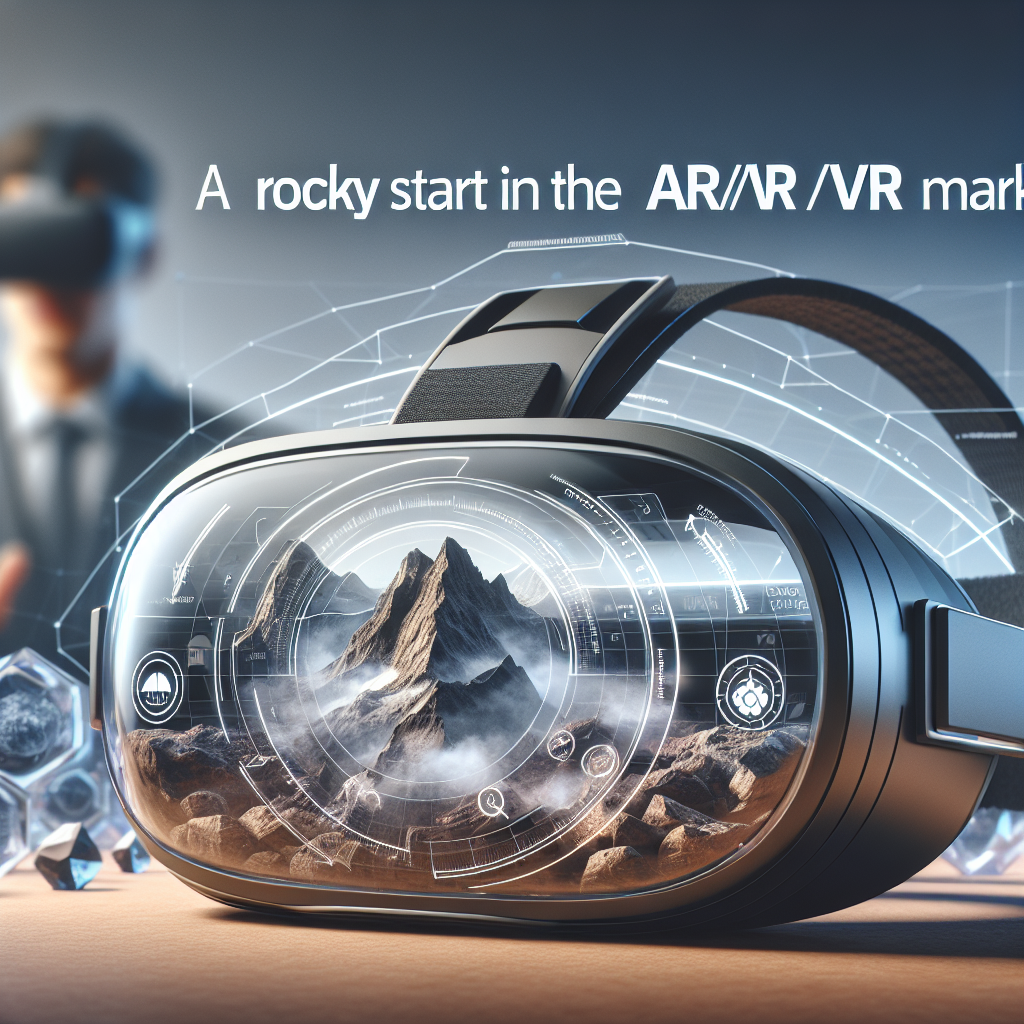The Future of WWE: Scaling Back on Augmented Reality Production to Focus on Authentic Wrestling Experience
Get ready wrestling fans, because the world of WWE is about to undergo a major change. In a surprising move, the entertainment company has announced that it will be scaling back on its use of augmented reality (AR) technology in its productions. This decision comes as a shock to many, as WWE has been at the forefront of incorporating AR into its shows in recent years, creating larger-than-life experiences for fans. But why is WWE taking a step back from this cutting-edge technology? In this article, we will explore the reasons behind WWE’s decision and the potential impact it may have on the future of wrestling entertainment.
Over the past few years, WWE has embraced augmented reality as a way to enhance the viewing experience for fans. From holographic entrances to interactive graphics, AR has allowed WWE to create a spectacle like no other. However, it seems that the company is now reevaluating its use of this technology. While WWE has not provided specific details about the reasons behind the decision, industry insiders speculate that it may be related to cost-cutting measures or a shift in creative direction. Whatever the case may be, the scaling back of augmented reality production in WWE is sure to have an impact on the way fans engage with the product and the overall visual experience of the shows.
Key Takeaways
1. WWE is planning to scale back on its augmented reality (AR) production, signaling a shift in its content strategy. The company has been using AR technology to enhance the viewing experience for its fans, but it seems that this approach may not be yielding the desired results.
2. The decision to scale back on AR production could be driven by several factors. One possible reason is the cost associated with creating and implementing AR content. WWE may have realized that the return on investment is not as significant as initially anticipated.
3. Another factor that may have influenced WWE’s decision is the audience reception to AR content. While some fans appreciate the added visual effects, others may find it distracting or unnecessary. By scaling back on AR, WWE aims to cater to a wider audience and provide a more streamlined viewing experience.
4. This move does not mean that WWE is completely abandoning AR technology. The company will likely continue to experiment with AR in a more targeted and strategic manner. By focusing on specific events or moments, WWE can still leverage AR to enhance storytelling and engage viewers in a more meaningful way.
5. WWE’s decision to scale back on AR production reflects the evolving nature of content creation and consumption in the digital age. While AR has the potential to revolutionize the entertainment industry, it is crucial for companies to assess its effectiveness and adjust their strategies accordingly. WWE’s move serves as a reminder that experimentation and adaptation are key in staying relevant and meeting audience expectations.
Impact on Audience Engagement
One of the key insights regarding WWE’s decision to scale back on augmented reality (AR) production is its potential impact on audience engagement. For years, WWE has been at the forefront of using AR technology to enhance the viewing experience for its fans. From holographic entrances to virtual reality matches, the company has constantly pushed the boundaries of what is possible in sports entertainment.
However, with the recent decision to scale back on AR production, fans may feel a sense of disappointment. The immersive and interactive nature of AR has allowed viewers to feel like they are a part of the action, blurring the lines between the virtual and real world. By reducing the use of AR, WWE risks losing this unique element that sets them apart from other sports entertainment companies.
Furthermore, the decision to scale back on AR production may have a direct impact on the level of excitement and anticipation surrounding WWE events. Fans have come to expect grandiose and visually stunning spectacles from the company, and AR has been a significant part of delivering on those expectations. Without the same level of technological innovation, WWE events may lose some of their wow factor, potentially leading to a decline in audience engagement.
Financial Implications for WWE
Another important insight to consider is the financial implications of WWE’s decision to scale back on AR production. Augmented reality technology is not only expensive to develop and implement but also requires ongoing maintenance and updates. By reducing their reliance on AR, WWE may be able to save a significant amount of money in terms of production costs.
However, the cost-saving benefits must be weighed against the potential impact on revenue. WWE has built a brand around delivering a unique and visually stunning viewing experience, and AR has been a significant part of that. If the company fails to find alternative ways to captivate and engage their audience, it could lead to a decline in ticket sales, pay-per-view buys, and merchandise revenue.
Furthermore, WWE has invested heavily in partnerships with technology companies to develop and showcase their AR capabilities. Scaling back on AR production may strain these partnerships and potentially lead to financial repercussions. The loss of these partnerships could result in a decrease in sponsorship deals and advertising revenue, further impacting WWE’s bottom line.
Industry Trends and Competition
The decision to scale back on AR production also highlights a broader trend within the sports entertainment industry. While WWE was once seen as a pioneer in adopting cutting-edge technology, other companies are now catching up and even surpassing them in terms of AR implementation.
Competitors such as All Elite Wrestling (AEW) have been quick to embrace AR technology, using it to enhance their storytelling and engage with fans in new and exciting ways. By scaling back on AR, WWE risks falling behind its competitors in terms of innovation and fan experience.
Furthermore, the rise of streaming platforms and digital content consumption has changed the way fans engage with sports entertainment. With the increasing availability of on-demand content, fans have more options than ever before. If WWE fails to adapt and provide a unique and immersive viewing experience, they risk losing viewers to other forms of entertainment.
In conclusion, WWE’s decision to scale back on augmented reality production has significant implications for the industry. It may impact audience engagement, financial stability, and the company’s competitive position. While cost-saving measures may be necessary, WWE must find alternative ways to captivate and excite their fans to ensure their continued success in the ever-evolving world of sports entertainment.
1. WWE’s Use of Augmented Reality
For years, World Wrestling Entertainment (WWE) has been at the forefront of incorporating cutting-edge technology into its productions. One such technology that has gained prominence in recent years is augmented reality (AR). WWE has utilized AR to enhance the fan experience, bringing larger-than-life visuals and interactive elements to its live events and broadcasts. From virtual set designs to holographic projections, AR has allowed WWE to create a more immersive and visually stunning experience for its fans.
2. The Benefits of Augmented Reality in WWE
The use of augmented reality in WWE has brought numerous benefits to the company. One of the key advantages is the ability to create dynamic and engaging visual effects that enhance the storytelling aspect of professional wrestling. For example, AR has been used to project virtual flames and explosions during a wrestler’s entrance, adding an extra layer of excitement and spectacle. Additionally, AR has allowed WWE to create virtual arenas and environments, giving fans the illusion of being present at the event even if they are watching from home.
3. The Cost of Augmented Reality Production
While augmented reality has undoubtedly enhanced the WWE experience, it comes at a significant cost. Producing high-quality AR content requires substantial investment in technology, personnel, and infrastructure. From the development of AR software and hardware to the training of production crews, the expenses can quickly add up. WWE has been willing to invest in AR to provide its fans with a unique and visually captivating experience, but the financial burden has become a growing concern for the company.
4. Declining Financial Performance
In recent years, WWE has faced challenges in terms of its financial performance. The company has experienced a decline in revenue and profits, leading to a reassessment of its cost structure. As a result, WWE has had to make difficult decisions regarding its production expenses, including scaling back on augmented reality. While AR has been a valuable asset in enhancing the fan experience, the financial constraints have forced WWE to reevaluate its priorities and find more cost-effective alternatives.
5. Reducing Augmented Reality Production
WWE’s decision to scale back on augmented reality production is a strategic move aimed at reducing costs without compromising the overall fan experience. The company is exploring alternative methods and technologies that can provide similar visual effects at a lower price point. This may involve utilizing more traditional production techniques or investing in less expensive AR solutions. By finding a balance between cost and quality, WWE aims to navigate its financial challenges while still delivering an engaging and visually appealing product to its audience.
6. Impact on the Fan Experience
With the reduction in augmented reality production, there will undoubtedly be an impact on the fan experience. While WWE strives to maintain the same level of excitement and spectacle, the absence of certain AR elements may be noticeable to avid fans. The challenge for WWE will be to find creative ways to compensate for the reduced use of AR and ensure that the overall fan experience remains compelling and immersive. This may involve focusing more on the in-ring action and storytelling aspects of professional wrestling, which have always been at the core of WWE’s appeal.
7. Case Study: WrestleMania AR Spectacle
One notable example of WWE’s extensive use of augmented reality was during WrestleMania 36, which took place in 2020. Due to the COVID-19 pandemic, the event was held without a live audience. To compensate for the lack of fan presence, WWE incorporated augmented reality to create a virtual crowd and enhance the visual experience for viewers at home. The AR spectacle featured virtual fans filling the seats, creating a sense of excitement and energy that would typically be provided by a live audience. While the virtual crowd was well-received, the production costs associated with such an elaborate AR setup were undoubtedly substantial.
8. Balancing Innovation and Financial Realities
WWE’s decision to scale back on augmented reality production highlights the delicate balance between innovation and financial realities in the entertainment industry. While AR has the potential to revolutionize the fan experience, the costs involved can sometimes outweigh the benefits, especially during challenging economic times. WWE’s strategic move serves as a reminder that even the most technologically advanced companies must carefully assess the financial implications of their production choices and make necessary adjustments to ensure long-term sustainability.
9. Future Outlook for Augmented Reality in WWE
Although WWE is scaling back on augmented reality production for the time being, it does not mean that AR will be completely abandoned. As technology continues to evolve and become more cost-effective, WWE may revisit its augmented reality initiatives in the future. The company has a history of embracing innovation, and if the financial landscape improves, WWE could once again invest in AR to provide its fans with an even more immersive and visually stunning experience.
WWE’s decision to scale back on augmented reality production reflects the financial challenges the company is facing. While AR has brought numerous benefits to the fan experience, the costs associated with its production have become a growing concern. By finding a balance between cost and quality, WWE aims to navigate its financial challenges while still delivering an engaging and visually appealing product to its audience. The future of augmented reality in WWE remains uncertain, but the company’s history of embracing innovation suggests that AR may make a comeback when the financial landscape allows.
Case Study 1: The Undertaker’s Entrance
One of the most iconic moments in WWE history is The Undertaker’s entrance. For years, fans have been captivated by the mystical aura surrounding his character. The WWE production team used augmented reality to enhance this experience and create a truly unforgettable spectacle.
Using AR technology, the production team projected eerie images and effects onto the entrance ramp as The Undertaker made his way to the ring. This included ghostly apparitions, lightning bolts, and even tombstones rising from the ground. The combination of these effects with The Undertaker’s character and presence created an otherworldly atmosphere that sent chills down the spines of the audience.
However, despite the success of this augmented reality production, WWE has decided to scale back on such elaborate effects. The Undertaker’s entrance will still be a spectacle, but it will rely more on practical effects and lighting rather than AR. This decision reflects a shift towards a more grounded and authentic approach to storytelling in WWE.
Case Study 2: The Fiend’s Transformation
In recent years, Bray Wyatt’s character, The Fiend, has become a fan favorite due to his unique and eerie persona. The Fiend’s entrance features a dramatic transformation from Bray Wyatt to his alter ego, complete with a mask and a haunting theme song.
Initially, WWE incorporated augmented reality into The Fiend’s transformation, using digital effects to make the mask appear on Wyatt’s face and create a visually stunning sequence. However, WWE has now decided to scale back on this AR production and focus more on practical effects to maintain the authenticity of the character.
The decision to scale back on augmented reality for The Fiend’s transformation allows for a more visceral and organic experience. The use of practical effects, such as smoke, lighting, and quick costume changes, adds a sense of realism to the character’s transformation, making it more believable and captivating for the audience.
Case Study 3: The New Day’s Entrance
The New Day, a popular WWE tag team, is known for their vibrant and energetic entrance. The team’s members, Kofi Kingston, Xavier Woods, and Big E, have always embraced a colorful and playful persona that resonates with fans.
In the past, WWE utilized augmented reality to enhance The New Day’s entrance, projecting vibrant graphics and animations onto the stage and ramp. This added an extra layer of excitement and spectacle to their already lively entrance.
However, WWE’s decision to scale back on augmented reality production means that The New Day’s entrance will now focus more on their natural charisma and energy. While the use of AR effects added visual flair, the team’s personalities and chemistry are what truly captivate the audience.
By relying less on augmented reality, WWE allows The New Day’s entrance to feel more genuine and authentic. The team’s infectious energy and connection with the audience become the main focus, creating a more intimate and engaging experience for fans.
FAQs
1. Why is WWE scaling back on augmented reality production?
WWE is scaling back on augmented reality production as part of a strategic decision to focus more on in-ring action and storytelling. The company wants to prioritize the core elements of professional wrestling and enhance the overall fan experience.
2. What is augmented reality production?
Augmented reality production is a technology that combines computer-generated images with the real world, creating an interactive and immersive experience for viewers. In the context of WWE, it involves incorporating virtual elements, such as graphics and effects, into live events and broadcasts.
3. How has WWE used augmented reality in the past?
WWE has used augmented reality in various ways, including entrance graphics for wrestlers, virtual set designs, and enhancing live event experiences for fans. It has added an extra layer of excitement and spectacle to the shows, making them visually stunning.
4. Will WWE completely stop using augmented reality?
No, WWE will not completely stop using augmented reality. While they are scaling back on its production, they will still utilize it in a more limited capacity for specific moments or events where it can enhance the storytelling and overall fan experience.
5. How will this decision impact the overall WWE product?
The decision to scale back on augmented reality production is aimed at improving the overall WWE product. By focusing more on in-ring action and storytelling, WWE aims to deliver a more authentic and engaging experience for fans, putting the emphasis back on the core elements of professional wrestling.
6. Will fans miss the augmented reality elements?
Some fans may miss the augmented reality elements initially, as they have become accustomed to the visual spectacle it brings. However, WWE believes that by refocusing on in-ring action and storytelling, they can create a more compelling product that will ultimately resonate with fans on a deeper level.
7. Will scaling back on augmented reality affect the production value of WWE shows?
Scaling back on augmented reality production does not necessarily mean a decrease in production value. WWE has always been known for its high production standards, and they will continue to invest in other areas to ensure the shows maintain their visual appeal and quality.
8. Will there be any cost savings from scaling back on augmented reality?
While there may be some cost savings from scaling back on augmented reality production, WWE’s decision is primarily driven by a desire to refocus their creative efforts rather than purely financial considerations. The company wants to allocate resources to areas that will have the most impact on the fan experience.
9. How will this decision impact WWE’s partnership with technology companies?
WWE’s decision to scale back on augmented reality production may impact their partnership with technology companies that specialize in this area. However, it is important to note that WWE is constantly evolving and exploring new technologies, so they may still collaborate with technology companies in different capacities.
10. Will this decision affect the future of augmented reality in professional wrestling?
WWE’s decision to scale back on augmented reality production does not necessarily indicate a decline in the future of augmented reality in professional wrestling. It is a strategic decision made by WWE to prioritize different aspects of their product. Augmented reality may still play a role in the industry as technology continues to evolve and new opportunities arise.
1. Stay informed about emerging technologies
As WWE scales back on augmented reality production, it’s important to stay informed about the latest developments in technology. Subscribe to tech news websites, follow industry influencers on social media, and attend conferences or webinars to keep up with the latest trends. This knowledge will help you adapt to changes in the digital landscape and make informed decisions about incorporating new technologies into your daily life.
2. Embrace the power of augmented reality
Although WWE is reducing its use of augmented reality, this technology still has immense potential in various fields. Look for opportunities to leverage augmented reality in your daily life. From exploring virtual museums and trying out virtual shopping experiences to using AR apps for educational purposes, there are countless ways to make the most of this technology.
3. Experiment with AR apps
There are numerous augmented reality apps available for smartphones and tablets. Download a few of these apps and experiment with them to understand how they work and what they offer. Whether it’s trying out AR filters on social media platforms or playing AR games, hands-on experience will help you become more comfortable with the technology.
4. Incorporate AR into your hobbies
If you have specific hobbies or interests, explore how augmented reality can enhance your experiences. For example, if you enjoy photography, try using AR apps that overlay information about the subjects you’re capturing. If you’re a fitness enthusiast, consider using AR fitness apps that provide virtual trainers or track your progress in real-time. By integrating AR into your hobbies, you can make them more engaging and interactive.
5. Use AR for learning and education
Augmented reality can revolutionize the way we learn and educate ourselves. Look for AR apps or platforms that offer educational content, such as interactive language learning apps or AR-enabled textbooks. These tools can make learning more immersive and enjoyable, helping you retain information more effectively.
6. Explore AR in the workplace
As augmented reality becomes more prevalent, it’s likely to impact various industries and workplaces. Stay ahead of the curve by exploring how AR can be integrated into your professional life. For example, architects can use AR to visualize building designs, while healthcare professionals can leverage AR for surgical planning and training. By embracing AR in the workplace, you can enhance productivity and stay competitive in your field.
7. Be mindful of privacy and security
While augmented reality offers exciting possibilities, it’s crucial to be mindful of privacy and security concerns. Some AR apps may collect personal data or have access to your device’s camera and microphone. Before using any AR app, read the privacy policy, understand the permissions required, and consider the potential risks. Protect your privacy by only using trusted apps from reputable sources.
8. Collaborate and share experiences
AR can be a social experience, so don’t hesitate to collaborate with others and share your augmented reality experiences. Attend AR meetups, join online communities, or participate in AR challenges to connect with like-minded individuals. By sharing your knowledge and learning from others, you can expand your understanding of augmented reality and discover new ways to incorporate it into your daily life.
9. Keep an open mind
As with any emerging technology, augmented reality is continually evolving. Keep an open mind and be willing to adapt as new advancements are made. What may seem like a gimmick today could become an integral part of our lives tomorrow. Stay curious, embrace change, and be open to exploring new possibilities.
10. Have fun and enjoy the experience
Above all, remember to have fun and enjoy the augmented reality experience. Whether you’re using AR for entertainment, learning, or professional purposes, make the most of the technology’s immersive and interactive nature. Experiment, explore, and let your imagination run wild. After all, augmented reality is here to enhance our lives and provide us with exciting new experiences.
Concept 1: Augmented Reality
Augmented Reality (AR) is a technology that allows us to see and interact with virtual objects in the real world. It combines computer-generated images or information with our physical surroundings to create an enhanced experience. In the context of WWE (World Wrestling Entertainment), AR is used to enhance the viewing experience by adding virtual elements to the live wrestling matches.
Concept 2: Production Scaling Back
Production scaling back refers to the reduction in the use of a particular technology or process. In this case, WWE is planning to decrease the use of augmented reality in their shows. This means that they will be using less virtual elements and focusing more on the actual wrestling matches and the wrestlers themselves.
Concept 3: Impact on WWE Shows
The decision to scale back on augmented reality production will have an impact on WWE shows. Here are a few ways it might affect the viewing experience:
1. More focus on the wrestlers: With less emphasis on virtual elements, WWE shows will likely put more focus on the actual wrestling matches and the wrestlers themselves. This means fans will get to see more of their favorite wrestlers in action and witness their skills and athleticism up close.
2. Realism and authenticity: By reducing the use of augmented reality, WWE shows may feel more realistic and authentic. The virtual elements sometimes create a sense of detachment from the actual events happening in the ring. With less reliance on technology, the audience can expect a more immersive experience that feels closer to the real thing.
3. Simplified production: Augmented reality production requires a significant amount of resources, including specialized equipment and technical expertise. By scaling back on this technology, WWE can simplify their production process, potentially reducing costs and streamlining their operations.
WWE’s decision to scale back on augmented reality production comes as a strategic move to align with the changing preferences of its audience and streamline its production costs. The company has recognized that while augmented reality has its benefits, it may not be the most effective approach for every aspect of their programming. By focusing on enhancing the in-ring action and storytelling, WWE aims to deliver a more immersive and engaging experience for its fans.
This decision also reflects the evolving landscape of technology in the entertainment industry. While augmented reality has gained popularity in recent years, it is crucial for companies like WWE to evaluate its impact on their overall production value and return on investment. By scaling back on augmented reality, WWE can redirect its resources towards other areas that can provide a more significant impact on their viewership and revenue. This move demonstrates WWE’s commitment to adapt and evolve with the changing needs and preferences of its audience, ensuring that they continue to deliver top-notch entertainment while maintaining financial sustainability.




